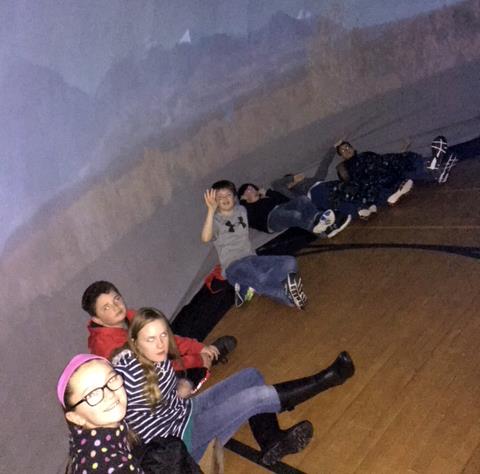STARLAB Gives Students Unique Perspective on Learning
/STARLAB at Keno Elementary School (Samantha Tipler)
Inflatable planetarium new for elementary schools this year
KENO – Klamath County School District elementary students are getting a whole new perspective on science. An inflatable planetarium, called STARLAB, is rotating to schools throughout the district. Students climb inside the igloo-like structure and interact with lessons about space, biology, geology and more.
Keno Elementary was one of the first schools to use the STARLAB, teaching lessons the week of Feb. 19 to 23.
“Being in STARLAB is like being in space,” said Keno Elementary Principal Sarah Shively. “Kids were able to feel like they were right there looking down on earth.”
“I’ve always been interested in space and the stars,” said Xander Mahoney, a Keno sixth-grader. “This helped me figure out how to find the constellations. I really liked the legends behind the constellations.”
“Our goal is for kids to be inspired by the STARLAB experience and then seek out ways to learn more,” said Jeff Bullock, KCSD secondary curriculum director. “We believe this is going to be a big hit with our elementary schools.”
Getting STARLAB
The KCSD learned about the STARLAB planetarium system last school year. The KCSD was updating its science curriculum for junior high and high school students, and the district science team wanted to get students excited about STEM (science, technology, engineering and math) at a younger age.
“STARLAB was a good fit. It’s really cool,” Bullock said. “The lessons are amazing, yet easy to present. Everyone loves this activity from young kids to adults.”
The Klamath County School Board approved the purchase of the STARLAB in the spring 2017. Mazama High science teachers Laura Nickerson and Clint Radford learned the system and trained other teachers.
The STARLAB is portable and inflates into a room-sized structure. Students climb inside and sit or lay on the ground to watch the domed ceiling for the prepared lessons. The district began sending it out to elementary schools at the start of the second semester at the end of January.
STARLAB and Science
Shively and the teachers at Keno instantly saw the excitement students had for science after coming out of the STARLAB.
“The kids were thrilled to go in the first time and even more excited to go in again the next day,” Shively said. Staff also experienced STARLAB on late-start day on Wednesday.
Students in grades four, five and six learned about constellations including the names, shapes and stories behind them. They tracked the planets’ orbits around the sun and learned the phases of the moon. First-graders, who recently learned about constellations and the planets, went into the STARLAB to see how the earth looks from space and view the stars.
“Having the ability to learn from something so hands-on is a treat, especially learning something so abstract like space,” Shively said. “It’s one thing to learn about space from textbooks and online resources, but it’s a whole new opportunity to learn by laying back and feeling like you’re in space!”
The district hopes STARLAB can inspire students to keep learning, in science and all other subjects.
“Science can really tie lots of other school subjects together. There’s math, reading, writing, history, all of this comes together in science,” Bullock said. “Presented well, science inspires curiosity and gets kids thinking.”
Press release provided by Samantha Tipler, Public Relations, Klamath County School Disctrict.



